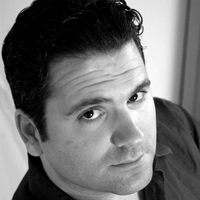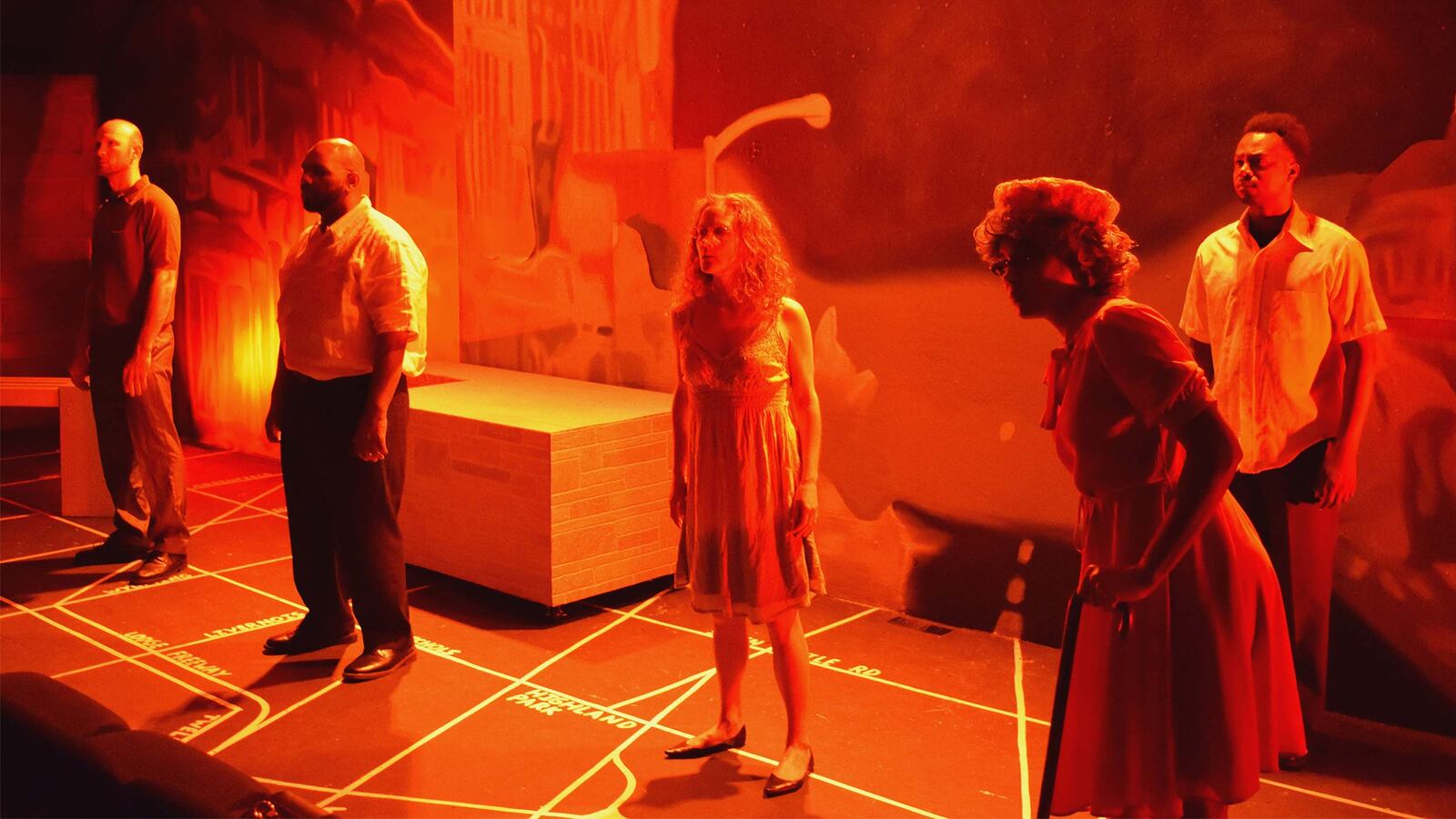It was an event that changed Detroit, indeed all of America.
On July 23, 1967, police raided an illegal bar, in local parlance a blind pig, on the corner of 12th Street and Clairmount. A common occurrence, but on that hot night tensions boiled over, setting Detroit ablaze.
The scene was mirrored in dozens of cities, but Detroit stands out with the most physical destruction and death—at least 43 people.
And there is what came afterward. Though white flight and the automobile industry’s decline were already in process, the riots, known locally as a rebellion, are seen as setting Motown on a trajectory where its population would fall by 1.2 million people, the largest urban decline in world history.
As prairie grass reclaimed swaths of the city, Detroit became the Rust Belt’s defining image, used even still today by President Donald Trump in his inaugural speech.
The city’s Matrix Theatre’s Dream Deferred: Detroit 1967--a play by Dr. Dr. Xavier Nicholas, David Wolber, who is also the director, and Megan Buckley-Ball, who is also the sound and props designer--seeks explanations, using recorded eye-witness accounts.
In the summer of 1967, Dr. Nicholas had moved from Alabama waiting to start a new job teaching for Detroit Public Schools that autumn.
Acting as a citizen journalist he hoped to create what he called a Studs Terkel-type project, where he would combine the various oral histories he collected into a possible radio show documenting the riot in a style similar to that of the Pulitzer Prize-winning journalist.
In the days following the riots, working for a few years, Dr. Nicholas contacted dozens of politicians, civil rights activists, police, nurses, journalists, doctors, and many others who were involved in the events, recording their recollections.
Dr. Nicholas, now a Tuskegee University English professor, said, “I wasn’t trying to run a pointed line, just get as many different voices from as many people as I could.” He added he “did not want a black or white perspective,” emphasizing he “just let them talk and tell me what they experienced and whatever interpretation they had. Out of all this polyphony of voices we could understand what happened.”
The tapes sat for decades. With the 50th anniversary pending and inspired by Anna Deavere Smith’s one-woman play Twilight—about Los Angeles’ 1992 Rodney King police beating trial and riots which uses the testimony of hundreds of interviews—Dr. Nicholas set to work.
Dream Deferred features selected snippets pulled from Dr. Nicholas’ interviews to explain and dramatize the events associated with the riots, bringing the audience from their start at the police raid through to their ending and eventual aftermath and impact on Detroit.
The 40 interviewees used in the play, from famous to everyday citizens, are interpreted by five actors—two black men, a white man, and a white woman and a black woman—within a dizzying array of period clothing, wigs, hats and uniforms from costume designer Lauren Montgomery.
Props are minimal, including a #1 Cop coffee mug for scenes representing Ike McKinnon (played by Jonathan Jones), Detroit’s first black police chief who was then a new officer affronted by institutional racism.
The 50-seat theater allows actors’ eyes to lock into individual spectators as they deliver their short, intense monologues. The stage floor is a map, 12th and Clairmount often where actors stand and deliver.
Among the most damning testimonies comes from then-Michigan Governor George Romney, Mitt’s father. Performed by Joshua Brown, he struggles with Lyndon B. Johnson’s administration. As “a political threat to Johnson,” the Republican governor notes their pending presidential election battle.
Johnson, Romney said, offered aid only if Detroit declared “an insurrection out of control,” voiding all insurance policies, leaving no chance for rebuilding. From a helicopter, Romney says, “it looked like a battlefield,” adding, “the city was burning down and everyone was playing politics.”
With this vignette the play suggests things did not have to be as they were, blaming a confluence of media, politics, police brutality, and the military.
One witness, Tom Oleckowski, describes police shooting out streetlights, plunging neighborhoods into darkness, simultaneously encouraging looting and hiding their brutality.
Bookseller and civil rights activist Ed Vaughn recounts police ransacking his black power establishment, Vaughn’s Bookstore. Another witness, Ron Hewitt, a key black city official in Detroit Mayor Jerome Cavanagh's administration, remembers a photographer encouraging a crowd to throw bricks at police.
The National Guard’s inexperience—one witness says they engaged in shootouts among themselves—added more mayhem.
Only the 82nd Airborne, represented by black soldier and Detroit native, Willie Toone, comes out well. Toone said, “There was something about blacks communicating with other blacks,” creating a different outcome wherever they deployed.
Media racism and sexism are highlighted by Susan Watson of the Detroit Free Press who went on to become its first female editor. Played by Katie Fullerton, she fought editors she claimed under-reported violence by the largely white police force to promote a sense of racial harmony even as the conflict raged.
In gruesome detail, Fullerton also interprets nurse Vivian Dortch describing a 12-year-old boy brought in by the police dead on arrival.
He was paraded on an ironing board, simultaneously transportation and proof of his having allegedly looted—justification for the police killing him. “What use would a 12-year-old boy have for an ironing board?” she says, going on to describe bayonet wounds of countless victims, dead and surviving.
Another poignant testimony comes from Albert Wilson, a black teenager permanently paralyzed by the police, performed by Mike Sandusky.
There are likely to be comparisons between Dream Deferred: Detroit 1967 and Dominique Morisseau’s award-winning Detroit ’67, centered on a fictional family, its plot driven in part by Motown music. In a Q&A session in one recent performance, the actors said its use of actual accounts means Dream Deferred is the most truthful representation anyone will see.
White experiences are not lost. Melissa Beckwith plays an anonymous woman sheltering a homeless black family at her church’s request, getting death threats from her neighbors. Shocked by epithets she won’t repeat, she says, “I don’t know how people can live with themselves.”
Detroit was one of Johnson’s Model Cities, considered, at least to whites, racially progressive. It’s true Detroit’s blacks were among the country’s most well-off, with America’s highest rate of home ownership.
But this white notion of Detroit’s racial harmony is also placed within the context of turbulent, segregated times. Within a layered chorus claiming, “it wasn’t any one incident” leading to the riots, witnesses also tell us, “black Detroiters didn’t compare their lots in life to black Wattsonites and black Harlemites, or anyplace else.”
Instead, “black Detroiters compared their lot in life to white Detroiters, and that’s where blacks in Detroit came up short.” There was “a whole history of frustration and of anger and of bitterness, from a people who asked themselves, how long?”
Hewitt explains it through Detroit’s anti-black police brutality, invisible to whites. “The police truly are your protectors, but they are our oppressors. I understand how you feel about them, but you can’t understand how we feel about them. That’s the problem.”
It’s a point whites who see the play—according to stage manager Sarah Drum, half the audience—should take note of. In an age of Black Lives Matter and unpunished violence by law enforcement, 50 years later in America, little has changed.
Dream Deferred: Detroit 1967 is at Matrix Theatre Company, Detroit, Michigan, through July 15.






